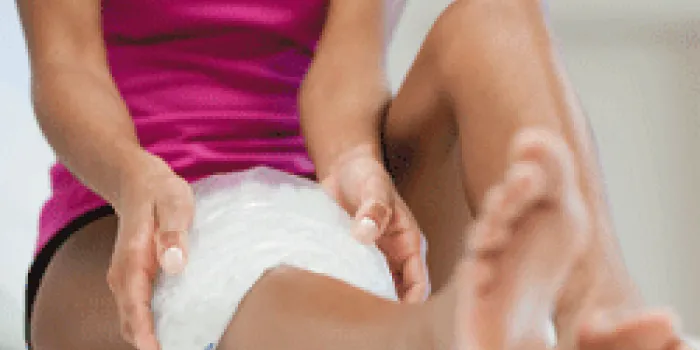Kari Peepe, 35, has platelet storage pool disorder and laughingly describes herself as a bit of a klutz. This Rohnert Park, California, preschool teacher spends her days running after children. But it’s not just her own bruises she has to consider. Her daughter, Scarlett, 5, also has a bleeding disorder.
“Scarlett was bruising as soon as she was mobile,” says Kari. “When she started preschool, she hit her head three times on the monkey bars.”
With chronic bruises a fact of life for children and adults with bleeding disorders, it may not be clear when to manage them at home vs. going to a hemophilia treatment center (HTC). One sure sign to seek treatment, says Lisa Boggio, MD, hematologist at Rush University Medical Center in Chicago, is when there are so-called “cartoon bruises.”
“Bruises that swell immediately, like when a cartoon character gets hit and a large purple bruise pops up quickly, need medical assessment,” she explains. HTC staff should see head or neck bruises as well, she adds.
In addition, Boggio advises paying attention to bruises on the torso and buttocks. “The buttock area has among the largest muscles in the body,” Boggio says. “If you bleed there, a lot of extra blood can be absorbed without you knowing.”
Also, bruises on the behind aren’t readily detected. So if a child sits on a toy, or an adult feels tenderness in the area, it may be wise to get it looked at. Back bruises can also be difficult to discern because there is space on the back where blood can be lost without it being obvious. Additionally, bruises on the stomach can be troubling because organs can be affected.
Bruises on the legs and arms, however, are less alarming. Generally, these can be treated at home, unless they are tender, raised and bright red, says Boggio.
How to treat
As attending physician at an emergency trauma department for 10 years and the founder and clinical director of New York-based Cure Urgent Care, an ambulatory urgent care practice, Jake Deutsch, MD, has seen his share of bruises.
Ice and elevation are most important in the first 24 to 48 hours, Deutsch says. Those are the beginning stages of inflammation, and you want to counteract the severity of the bruising as much as possible.
“After the initial 48 hours, I tell people to do whatever makes them feel better,” says Deutsch. “Heat helps muscles relax and speeds the healing process.”
When going in for an assessment, tell your doctor if the bruise resulted from tripping and falling, a sports-related collision or injury, or a car accident. Be sure to communicate the details, says Deutsch
If you go to an emergency room, be forewarned that there are different levels of care, ranging from 1 to 5. The lower the number, the more comprehensive the care. So, a Level 1 trauma center has the most resources and a Level 5 trauma center, the least. Deutsch advises seeking out at least a Level 3 trauma center if you’re concerned that your bruises need emergency medical attention.
When to treat
As a child, Kari was constantly covered in bruises. Back then her parents used makeup to cover some of them. Today she wears long sleeves and pants; she dresses Scarlett similarly when necessary. Kari was once reported to social services when well-meaning people saw her and her daughter covered in black-and-blue bruises. That incident motivated Kari to start her blog: atouchofscarlett.blogspot.com.
But more important than covering bruises is being proactive. Kari tapes a laminated medical information card on the inside windshield of her car. It contains details about her and her daughter’s condition as well as their names, dates of birth and preferred hospital. She and her daughter also wear medical identification bracelets or necklaces at all times. Likewise, Kari secures a medical information sheet onto Scarlett’s backpack and lunch bag.
For Krystal Castaneda, 23, who has von Willebrand disease type 1, bruising is something the entire family has to deal with because her son, Leonardo, 5, and husband, Manny, 28, also have bleeding disorders. Krystal, a stay-at-home mom from Palmdale, California, is adamant about being a good role model for Leonardo. That means treating bruises with ice and elevation. “My son needs to see that we need to treat and not just let it go,” she says.
When it comes to the psychological and emotional aspects of bruising, Krystal says patience is the key. “Sometimes you’re not able to do what you were doing 20 minutes ago because of a bruise,” she explains. “I’ve had to learn to relax.” Taking a deep breath and being patient help Krystal deal with the complications of bruising.
When in doubt about a bruise, it’s always wise to see a doctor. Some of Boggio’s patients snap a cellphone picture and text her the image. It’s a quick way to get an assessment and know if you can self-treat or if you should go to an HTC. But keep in mind that sending texts or images outside of a secure online portal means you can’t be sure your personal information is protected. And remember: You’re not battling bruises alone. Your HTC is a car ride or phone call away.

